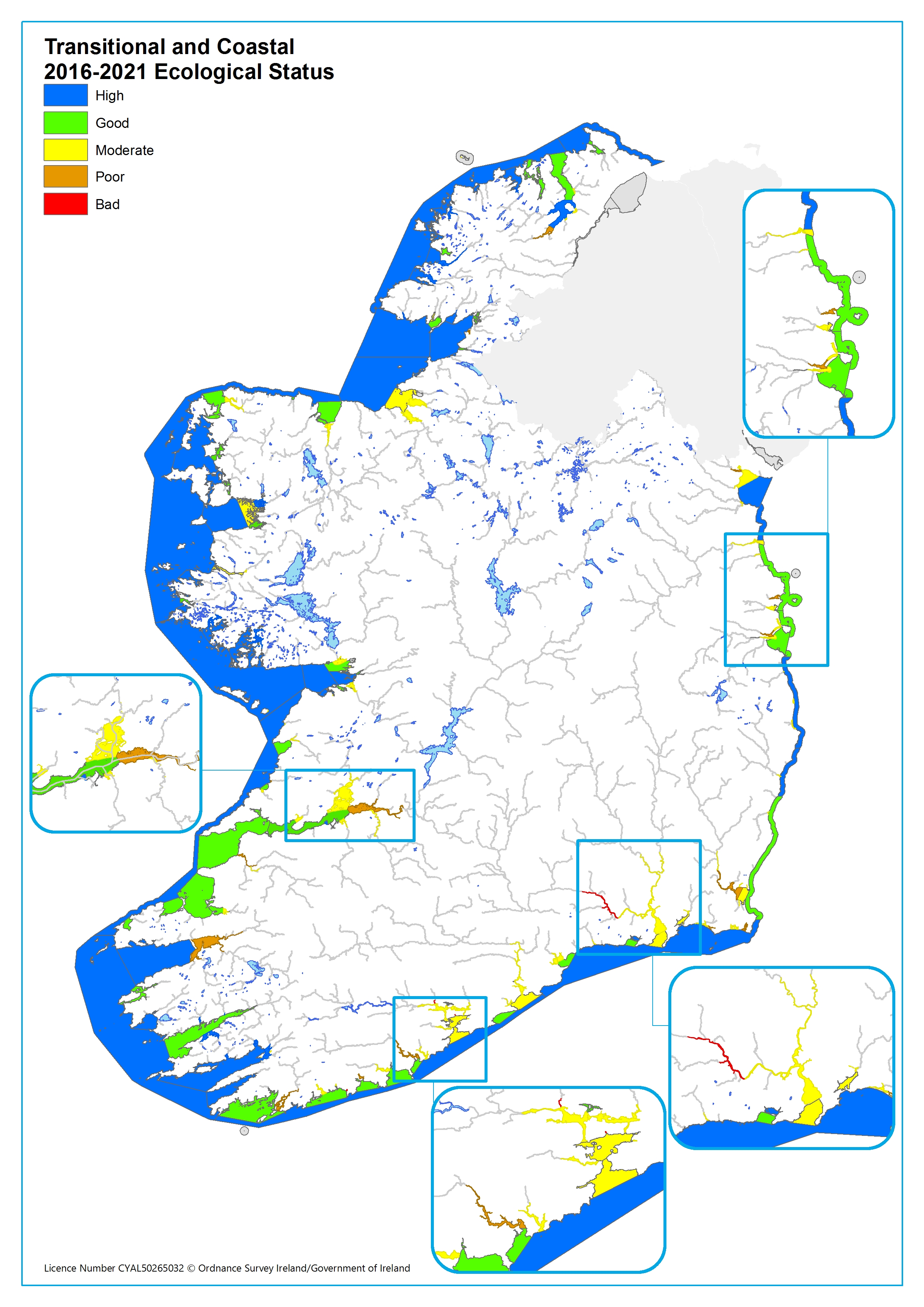A monitoring programme to provide an overview of ecological health in transitional and coastal waters is undertaken by:
The National Marine Monitoring Programme is coordinated by the EPA.
As our tidal waters cover more than 14,000 km2, the area is broken down into more manageable units called water bodies. A representative number of these water bodies were selected to be monitored to provide an overall indication of the quality (status) of Ireland’s marine waters.
Currently, 80 transitional waters (estuaries) and 46 coastal waters are included in the national monitoring programme.
Both the plants and animals (biological communities) as well as chemical measurements are monitored in each water body.
The biological communities that are monitored include:
The monitoring programme also measures:
For technical information on our survey methods and our detailed monitoring programme, please see our report.
81% of monitored coastal water bodies and 36% of monitored transitional waters are at ‘high’ or ‘good’ ecological status. There has been a decline in the quality of our estuaries and coastal waters, particularly in the south and southeast of the country where high nutrient levels in the water are damaging their ecology.

Ecological status of transitional and coastal waterbodies 2016-2021

Catchments.ie shares science and stories about our waters. This includes the Catchments Newsletter, detailed assessments for our 46 catchments and 583 sub-catchments, downloadable chemistry data, and dashboards for an overview of status, pressures, impacts and objectives.
-500x262.webp)
EPA Maps enables you to view environmental information interactively on a map. It includes the latest data on water quality.